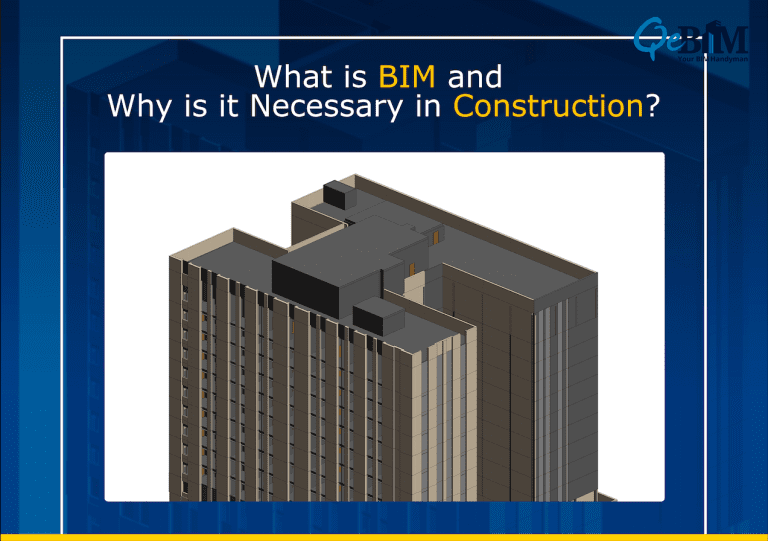What is BIM and Why is it Necessary in Construction?

Construction is quite a complex process and requires many people having different fortes to come together and work on a single project. This involves architects, civil engineers, contractors, workers, and so on. Having everyone on the same page at the same time is quite a tedious task, this is where BIM comes into the picture. BIM helps them to connect with each other from anywhere and states the actual flow of the construction process stepwise.
What Is Business Information Modeling (BIM): BIM Definition
BIM is an intelligent model-based process that helps in connecting AEC professionals for an efficient building process. This model is based on an open cloud platform that integrates varied data to get the digital representation of any structure. This representation covers every minute detailing of various phases involved in construction covering planning, design, build, and operations. It is software used in creating a realistic model of any infrastructure or building or any type of structure where all the property details are clearly stated.
Lifecycle of BIM
The lifecycle of BIM is the practice of creating, analyzing, maintaining, and referring to building information to manage the build and operations of the construction site throughout its lifecycles. It basically consists of 4 stages as below:
- Planning: The entire planning such as concept development, requirement analysis, drawings, modeling, and visualizations are done at this stage with the help of CAD software.
- Design: This stage includes design simulation such as comfort, energy, GHGs, lighting, sound, etc. It also describes model specifications and actual prototyping. Clash Detection and Supply Chain are taken care of at this stage itself to get better clarity.
- Construction: This stage includes shop drawings and details like product and pricing databases.
- Operations and Management: This takes care of and scheduling, logistics, hand-overs, product guarantees, manuals, facility management, material management, and future opportunities such as renovations, refurbishments.
Who can use BIM?
- BIM /CAD Technicians
- AEC Professionals
- Maintenance Technicians
- Builders
- Contractors and Sub-contractors
- Interior Designers
- Facility Managers
- Sustainability Managers
Why is BIM a Necessity in Construction?
Consider a scenario where an architect makes a change while implementing a process. To communicate this change to the entire chunk of people involved requires an ample amount of time and also there are times when this change won’t even reach the lowest level. To overcome such scenarios, BIM Services help to a large extent. Any small change implemented at any level of the construction process reaches every single person involved in the project in real-time thereby avoiding confusion and hassle-free implementation.
Benefits of BIM:
- Greater visibility: With BIM, you can get a complete walkthrough of any construction site beforehand.
- Early detection of any issue: BIM in construction represents every bit and part of the building process thereby stating any discrepancies, clashes, or issues well in advance.
- Improvement in scheduling: The building process can be sequenced efficiently using intelligent modeling thereby enabling systematic scheduling.
- Cost-savings: Costly changes while construction can be avoided as all the conflicts and issues are identified in the modeling phase itself.
- Better decision making: Since the entire scenario of construction structures is in hand, many complex decisions involving materials required, workers required many other such decisions can be made effectively.
Crux:
BIM is used throughout the complete lifespan of any building or construction project giving you a clear picture of the whole process right from inception to the finish line. Many extraordinary buildings that exist today would not have been possible without BIM. It is not only an innovative trend but a necessity that has taken the AEC industry to the highest levels by designing efficient and cost-effective structures. Not only the new projects, but even renovations, refurbishments, and redesigning have also become simpler with the implementation of BIM. BIM Company that understands its need is reaching different heights with this tool.